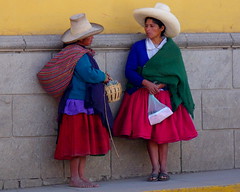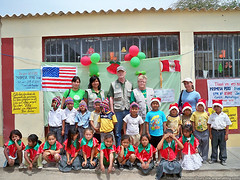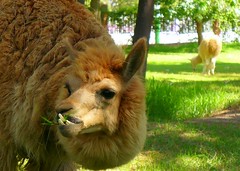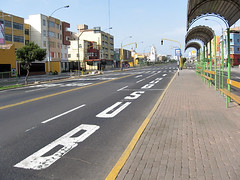Suffering of uncontacted Amazon tribes
The Amazon Rainforest is full of isolated indigenous peoples. They exist in Venezuela, Colombia, Ecuador, Brasil, Bolivia, Paraguay and Peru. For President of PetroPeru Daniel Saba speaking of this is like speaking of the Loch Ness monster. Faced with protests from organized native groups, who point out the dangers for uncontacted and isolated tribes 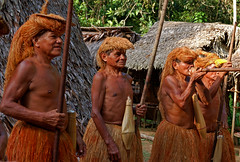 of selling off huge areas of Peru’s Amazon, he declared in April of this year “no one has seen them, so what uncontacted people are they talking about?” Surely Saba is not so unbelieving now, after the publication of photos taken from the air on the 18th of September by a group of belonging to the Zoological Society of Frankfurt and the National Institute of National Recourses of Peru, showing some 20 isolated and previously unknown villages along the Los Piedras River.
of selling off huge areas of Peru’s Amazon, he declared in April of this year “no one has seen them, so what uncontacted people are they talking about?” Surely Saba is not so unbelieving now, after the publication of photos taken from the air on the 18th of September by a group of belonging to the Zoological Society of Frankfurt and the National Institute of National Recourses of Peru, showing some 20 isolated and previously unknown villages along the Los Piedras River.
Beatriz Huertas, anthropologist and writer of the enlightening book Los Pueblos En Aislamiento, says that “it is terrible, criminal even, that the National Institute of National Recourses has published the co-ordinates of where they saw these villages. I have received a lot of letters in protest and also a lot of letters from people wanting to contact them such as Christian missionaries, film makers, television producers and journalists. But this is not good for these communities, not at all”.
The law relating to isolated peoples and first contact does not guarantee these groups territorial rights. “It is very ambiguous”, Huertas says, “it indicates that once they remain sedentary, and give up their patterns of migration, then they begin to have rights. This means they have to give up their way of life to have any form of protection.”
Before they were known as “uncontacted tribes”, now they are known as being in “voluntary isolation”. Both descriptions don’t really describe the reality. According to Klaus Rummenhoeller, a German investigator with 25 years of experience in studies of Amazon natives, “the indigenous peoples, including those considered to be in isolation have maintained and continue maintaining contact with their indigenous neighbours”. They are not isolated from each other, they are isolated from us.
Neither is it entirely true that the people want to isolate themselves, clarifies Beatriz Huertas, but some feel it is the only way to protect themselves against threats from the outside world. Some communities were enslaved in the times of the rubber boom and by illegal loggers. They also have a fear of outside illnesses – they can die just by catching a cold.
Now the phrase “first contact” is used to define a phase when the natives have started a process of interaction with national society. Generally this is an absolute failure. As Antonio Iviche, a Harakmbut native and President of the Native Federation of the Madre de Dios river explains “we were once 30,000 people – until they contacted us. They infected us with illnesses that we had no immunity to. We couldn’t work. We began dying. Now there are only 1500 of us.”
There are five reserves that have been created by the state for the native tribes; Kugapakori, Isconahua, Mashco Piro, Madre de Dios, Murunahua, and there are petitions from the native federations to create five more, but this is all on paper only. In practice these territories are being sold off to oil companies and their peoples are being killed. Currently, the Native Federation of the Madre de Dios (Fenamad) and Interethnic Association of Development of the Peruvian Rainforest (Aidesep) are arguing their case with the Interamerican Commission of Human Rights in Washington.
Tags: amazon, indigenous, madre de dios, oil, petrolperu, rainforest, uncontacted tribes



